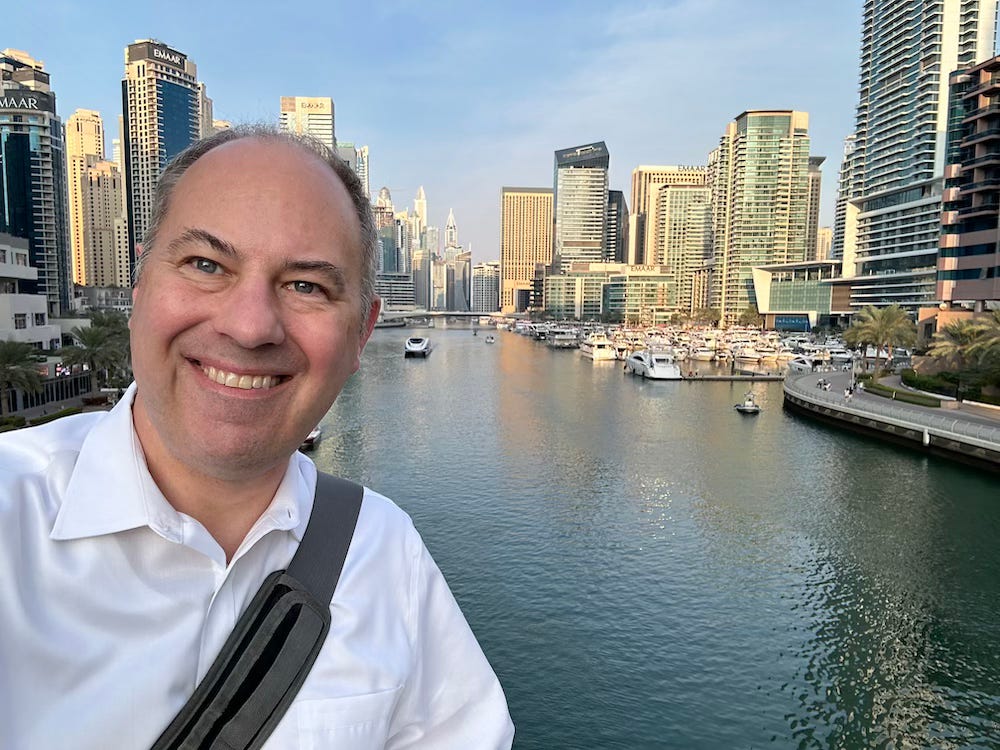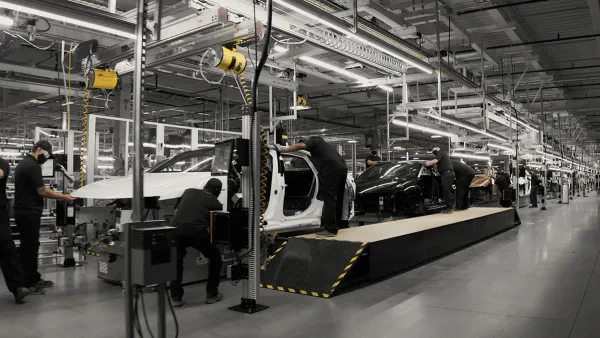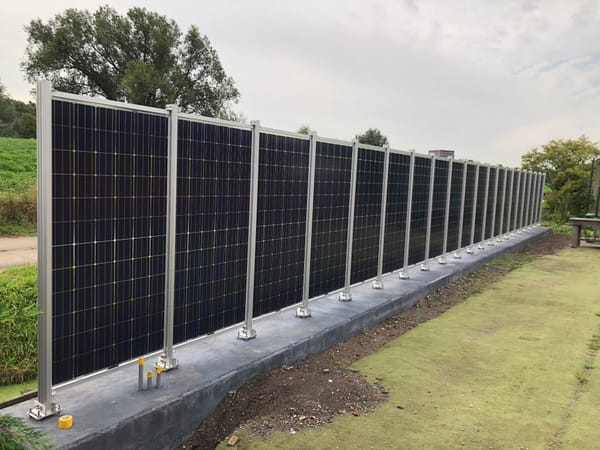A few more COP28 thoughts

Good Morning from Chicago,
There’s a theory among COP watchers that there are Big COPs and Little COPs. Big COPs, meetings that result in major agreements, come along every few years, while the intervening Little COPs are mostly about maintenance of previous decisions. Examples would be 2015’s Paris Agreement, creating the ratcheting up emissions pledges we live in now, 2021’s Glasgow Agreement, which created the first coal reduction pledge and abatement financing agreements.
This year’s COP is now being cited as a Big COP, as the “UAE Consensus” (the name Sultan Al Jaber gave to the final Global Stocktake text) is being hailed as a major agreement. And it should be, as there’s a huge list of pledges and promises from the signatory countries, primarily a consensus that fossil fuel is a leading cause of global warming and that we humans need to wean ourselves off of it.
The diplomatic energy necessary to make a Big COP happen is in limited supply, goes the thinking. Countries can’t make major promises every year because they need time to assess the impact of previous agreements and to figure out how to implement those agreements.
After viewing the pressures on display at COP28, I don’t believe that’s a valid line of thinking anymore.
There is a growing number of unaddressed, unavoidable problems that will only increase as the world warms and the consequences of inaction become clearer. Some items left unresolved include:
- Establishing a global carbon credit trading system. Despite a last minute attempt at resolution on the final night, negotiations collapsed. A working international trading system has the potential to disrupt developing country economies and create whole new taxation regimes in the developed world. Ignoring it or implementing it badly could create a whole new form of financial crimes and also miss an opportunity for carbon reduction.
- Determine financing responsibility for climate adaptation costs. Developing countries were disappointed that the Global Goal for Adaptation was shunted aside at the last minute, but encouraged that COP29 is supposed to determine operations for a $100 billion annual New Collective Quantified Goal on Climate Finance. Disasters will get worse, as will resulting immigration flows. The NCQG is the handiest solution to those problems.
- New Nationally Determined Contributions are due next year. While the world made lots of broad promises with the UAE Consensus, the NDCs are where the rubber hits the road. The pressure will be on to do more to stay under 1.5°C.
- What’s supposed to happen to Island States? Last week’s agreement provides a framework to discuss future reductions of fossil fuel use; it does not outline concrete actions that will keep the world under 1.5°C. A Marshall Island representative called the agreement a “death sentence” and the Samoan head of delegation, Anne Rasmussen, referred to, “a litany of loopholes in this text that are a major concern to us.” These countries are under an existential threat, which has yet to be directly addressed.
- How will developing country green energy finance be addressed? Lots of big numbers have been tossed out, but if the world is going to triple renewable energy use and double energy efficiency by 2030, somewhere between $4.5 and $6.9 trillion a year of investment will be needed. While the World Bank will be involved with solving some of that problem, the capital flows needed are so huge that coordinated government intervention is necessary. While there will likely be lots of other lead up meetings, a COP is the only place for a multilateral agreement on this topic.
- What happens to fossil fuel producers? There is a kind of fantasy thinking among climate activists that if we all just decide to stop using fossil fuels, everything will immediately get better. The trouble is, there are lots of places in the world where political and economic stability is purchased with the easy revenue from fossil fuels. Simultaneously, it is much cheaper to build economies with fossil fuel than green energy – as the Bolivian representative reminded delegates in multiple speeches. A real green energy transition must address these problems – and no COP meeting has even come close.
In the earliest years of COP meetings, the fight was over whether or not humans were responsible for climate change. The 2015 Paris Agreement ended that discussion. One could argue that leading up to this meeting, the fight was over what exactly was causing climate change. The UAE Consensus pinned the problems squarely on fossil fuel use.
We’re finished with the questions of “what’s the problem?” Now the world needs to determine, “What are the solutions?” also known as “implementation” in COP-speak.
As warming gets worse and climate disasters pile on top of each other, the requirements for implementation solutions will only come faster and more often. Therefore, I think the luxury of occasional Big COP meetings is over. We’re going to find that external pressures, from diplomacy, activism, economics, and environmental disasters will only increase.
It’s very possible delegations will arrive in Baku for COP29 with the intention of playing it low key, but I’m willing to bet that like this last year, 2024 will be stocked with lead-up meetings illustrating what’s at stake in Baku, making a low key approach impossible.
I think the realities of climate change means we’re in store for a big COP almost every year – at least through the end of the decade.
Lots and Lots of Analysis
- The real role of Al Jaber as COP President [Semafor] – Tim McDonnell’s weekly Net Zero newsletter for Semafor has been sharp and his COP coverage was insightful. Here he makes a thoughtful assessment of Al Jaber’s presidential performance.
- A rundown of the final agreements [IISG] – IISG provided a daily, boiled down review of what happened at COP28. This is their summation.
- The “everything” report [Carbon Brief] – The CB team provided daily soup-to-nuts coverage of the meetings. Here’s their blow-by-blow review of the meetings. Don’t miss their “Who wants what” grid, detailing almost every major diplomatic position on each of the discussed texts.
- The country reactions [Climate Home News] – An excellent round up of the various minister statements at and after the final plenary session.
- Diplomatic lessons learned [E3G] – I learned to listen carefully to Alex Scott and Tom Evans in Dubai. Their analysis was consistently sober and forward thinking. Here they consider how the negotiations process has likely changed.
- 1.5°C is busted [NYT] – While Al Jaber and others at COP28 repeatedly said “1.5 is our North Star”, the science and the world’s economic direction is clear that we’re going to bust through that number and probably head past 2°C.
A Couple Videos
While in Dubai, I shot a pair of brief videos for my Kickstarter supporters. Now, everyone should enjoy them.
- A trip to Ski Dubai, the indoor ski hill
- A tour of COP28 at Dubai Expo City on the last day
What Comes Next For This Newsletter
In case you’re new to this newsletter, let me introduce myself. I’m Mike, an itinerant reporter and news entrepreneur based in Chicago. I’ve founded and operated a number of independent news organizations, some of which I’ve sold. I’ve long had an interest in climate, dating back to my time working for a pair of U.S. Secretaries of Energy in the Clinton Administration. I actually lobbied hard to go to COP5 (Buenos Aires) and COP6 (Bonn), but back then the U.S. delegation was only a couple dozen and I was told there was no room for anyone from Energy, except one veteran technical advisor.
This newsletter was a rekindling of that climate interest, backed by a Kickstarter and a small group of non-profit leaders. I went to COP28 as a news entrepreneur, disguised as a reporter. I’ve learned that when it comes to the news business, the best way to learn how a niche works is to report it. There the missing news stories, picadillos of competing news organizations, and the demands of news consumers are quickly exposed. This beat was no different.
One thing COP28 impressed me with was the number of English-language reporters all competing for the same story. During the meeting I followed newsletters from Reuters, New York Times, Bloomberg Green, Semafor, Carbon Brief, Climate Home, Heatmap, and Wall Street Journal. I also followed regular reporting from Financial Times, BBC, Le Monde, Washington Post, Associated Press, Guardian, Politico, and Times of India.
Exactly what went uncovered? Does it seem like every niche is served? Is there a need for another voice?
Now that I’m home, I’m trying to answer those questions over the holidays, with an eye towards answering the big question: Is there an unserved audience here?
Perhaps you have an answer to that question, I’d like to hear it if you do. Please respond to this newsletter with your thoughts.
But for now, I’m going to sign off from this newsletter until at least mid-January. During which I’ll work on a report on my entrepreneurial findings, air out my brain a bit, and visit with my family for the holidays. If you are interested in reading the final report, please respond to this newsletter or email me at mike@fourcher.net.
Thank you again for your support and readership. This has been a fascinating experience.






